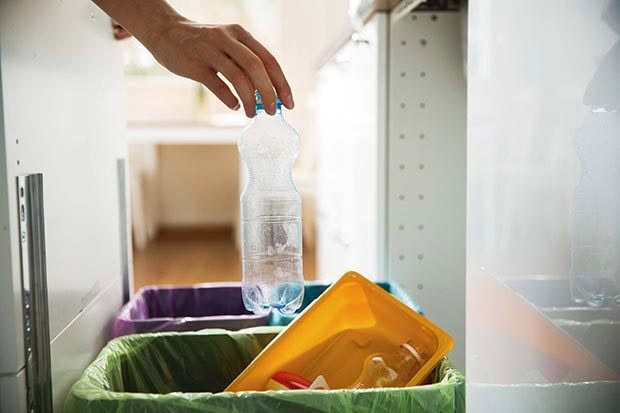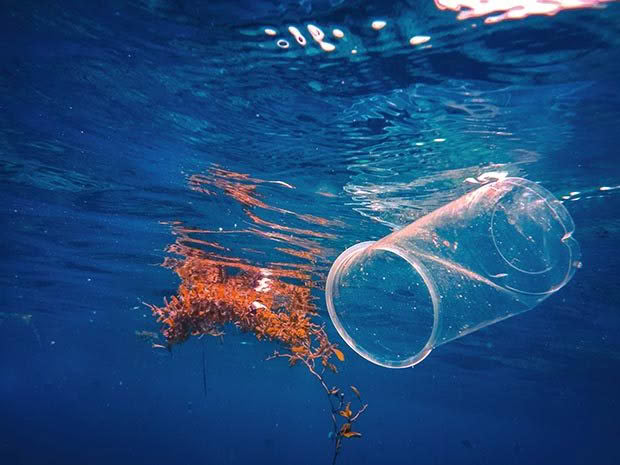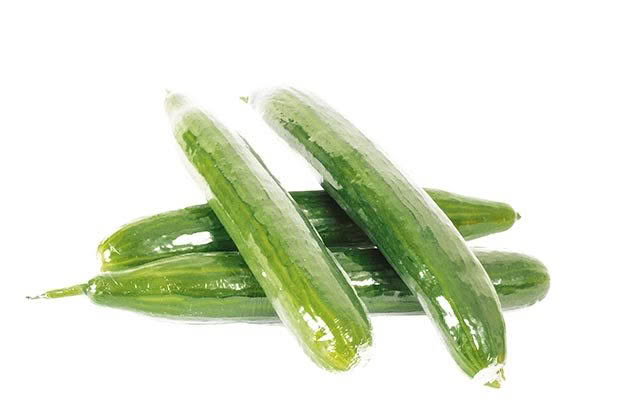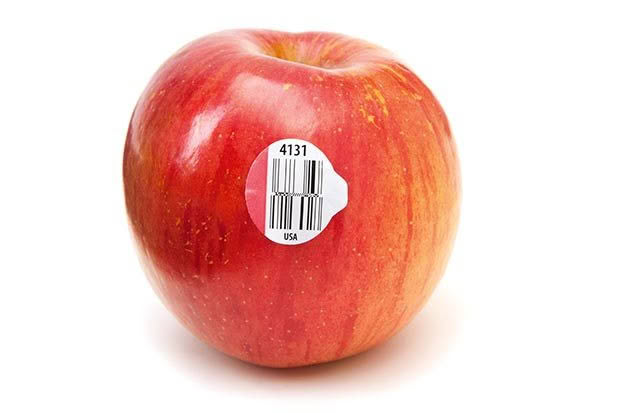Tackling waste: Boomerang Bags, newspaper nests and compostable sticky labels

Think the world will be saved by saying no to plastic bags occasionally? Think again.
Words: Lucy Corry
There’s something to think about when hefting the household rubbish out for collection, or tossing an empty takeaway sushi box into the bin at work: there is no “away”. Sure, that unwanted waste might disappear from the immediate environment, but it has to go somewhere. News reports showing children foraging on vast rubbish mountains in developing countries and marine life dying from ingesting plastic in the world’s oceans proves the 40-year-old “reduce, reuse, recycle” message still hasn’t sunk in.
RECYCLE RIGHT
Setting up clear systems – having the right bins in the right places – will make the process more likely to succeed, the Susainability Trust’s Nada Piatek says. “The easier you make it on yourself, the more likely you are to do it.” Make sure any recyclable goods are clean before they go out for collection. Dirty items could contaminate the whole batch, meaning nothing in the load will be recycled. What can and can’t be recycled varies from council to council, so check to see what applies. Find out if “hot” or commercial composting is on offer – if not, any biodegradable or compostable items will only degrade until the landfill is covered. Some councils or private businesses offer e-waste recycling, so check before throwing out defunct electronic goods like batteries, phones, small appliances, cables or computers.

LESS IS MORE
The best way to cut down waste and recycling is not to produce it in the first place, says Nada. “We all know that we can reduce the amount of packaging that comes into our homes by bulk buying, and using reusable containers for storage,” Nada says. “If you’ve ditched takeaway coffee cups in favour of a reusable cup, then take the next step and invest in some good-looking containers, so you don’t have to load
up on one-use plastic packaging for café food.”
BOOM TIME
Using less plastic (and fewer plastic bags) requires a bit of planning and preparation. Help others reduce their use by joining in the Boomerang Bags movement, which gets people together to make sustainable shopping bags from recycled materials. The bags are then made available to anyone who wants them in a winning trifecta that blends sustainable living, community building and recycling. Visit boomerangbags.org to learn more about setting up or joining a Boomerang group in the neighbourhood.

BIN THERE DONE THAT
There’s a simple solution to the “but how will I line my rubbish bin if I give up plastic bags?” conundrum – use newspaper. There are a million videos on the internet showing different methods, but the essential concept is the same. Create a kind of nest by layering two or three sheets of paper. When the bin is full, fold the newspaper into a parcel to enclose the rubbish. Newspaper beats plastic in this case because a) it’s already recycled and b) it breaks down faster in the landfill.
HELPING HANDS
Soft plastics – the sort you can scrunch – can be recycled via bins at The Warehouse and many supermarkets. The plastic is melted down and recycled into park benches, bollards and outdoor furniture. Collect a (recycled) bagful and drop it off with the weekly shop.
IT’S COMPLICATED
Why can’t packaging be banned altogether? It’s not that easy, says Sharon Humphreys, executive director of the Packaging Council of New Zealand. Sharon argues that well-designed packaging solves more problems than it creates. In an ideal world, people would all grow their own vegetables, but in the meantime, gas-flushed plastic bags stop salad greens from deteriorating and help people eat healthier food than they might otherwise deem too inconvenient, she says.
“People often ask why cucumbers are wrapped in plastic. But if you buy one that’s unwrapped, it will last just three or four days. When it’s wrapped in plastic, it will last more like 14 days. The resources that have gone into making that tiny sleeve of plastic are nothing like the resources that have gone into growing that cucumber and getting it to the consumer. If packaging can prevent serious food waste, then that has to be a good thing.”
Sharon says the “right” level of packaging is very subjective – what could be abhorrent to one person might be fine for the next. “It’s a difficult one, I freely admit. You might not need the convenience of buying a bag of pre-packed apples at the supermarket, but for someone else it might be a top priority. We live in a fast world, everyone is time poor, and the argument from a health point of view is that doctors would prefer you picked up a bag of pre-packed fruit or veg rather than none at all.

“If less packaging means people will eat less well because it’s not as convenient, or there’s more food waste, no one wins.” She says banning plastic bags from supermarkets and replacing them with compostable or paper bags is not the answer. “It would be great to say, ‘let’s get rid of these and all our problems will be over’. But it’s not as easy as that. If you look at modern supermarket bags, there’s a high level of reuse. Bin liners are a classic example. People won’t stop lining their bins; they’ll just go and buy plastic bags, which are bigger and thicker than supermarket bags. That’s not win-win, it’s lose-lose.
“It’s actually about personal responsibility. Recycling is not going to save the world; we have to find ways of doing things differently. We need good packaging; we need to stop wasting products. Companies are innovating all the time – in Switzerland, Nestle has realized its chocolate bar packaging is well over-engineered and is looking at ways to make it less robust.
“We can choose whether we buy something or not, we can choose how we dispose of the packaging, we can say whether or not we find something acceptable. We need to work with the world we’ve got to get the world we want.”
STICKY PROBLEMS
There may be hope ahead for people who struggle to understand the point of those tiny labels stuck to fruit and vegetables. The stickers are often viewed as emblems of pointless packaging excess, using up valuable resources and creating non-degradable waste on a natural product.
In the northern hemisphere, laser marks are being trialed as a “natural branding” alternative to the stickers, which carry branding and product information identifying varietal and country of origin for export purposes. Earlier this year, a Dutch produce company joined forces with a Swedish supermarket to try the laser labels on sweet potatoes and avocados, while British retail giant M&S uses the method on coconuts. The laser technology is thought to create less than one per cent of the carbon emissions than a sticker of similar size.

In New Zealand, Zespri pioneered the world’s first compostable sticky label for kiwifruit in 2013. Other sectors are yet to follow, though New Zealand Apples & Pears chief executive Alan Pollard says his organization is keen to explore its options. “Making the stickers biodegradable is certainly on my radar, and it’s something we’ve identified that we need to seriously look at,” he says.
Love this story? Subscribe now!
 This article first appeared in NZ Life & Leisure Magazine.
This article first appeared in NZ Life & Leisure Magazine.
